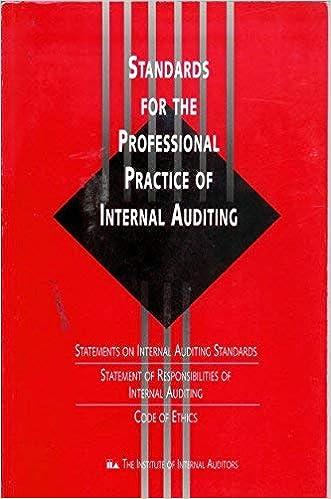Question
Discusiion Board The board of education for the Central Catskill School District is considering the acquisition of several minibuses for use in transporting students to
Discusiion Board
The board of education for the Central Catskill School District is considering the acquisition of several minibuses for use in transporting students to school. Five of the school district's bus routes are underpopulated, with the result that the full-size buses on those routes are not fully utilized. After a careful study, the board has decided that it is not feasible to consolidate these routes into fewer routes served by full-size buses. The area in which the students live is too large for that approach, since some students' bus ride to school would exceed the state maximum of 45 minutes.
The plan under consideration by the board is to replace five full-size buses with eight minibuses, each of which would cover a much shorter route than a full-size bus. The bus drivers in this rural school district are part-time employees whose compensation costs the school district $18,000 per year for each driver. In addition to the drivers' compensation, the annual costs of operating and maintaining a full-size bus amount to $50,000. In contrast, the board projects that a minibus will cost only $20,000 annually to operate and maintain. A minibus driver earns the same wages as a full-size bus driver. The school district controller has estimated that it will cost the district $15,250, initially, to redesign its bus routes, inform the public, install caution signs in certain hazardous locations, and retrain its drivers.
A minibus costs $27,000, whereas a full-size cost $90,000. The school district uses straight-line depreciation for all of its long-lived assets. The board has two options regarding the five full-size buses. First, the buses could be sold now for $15,000 each. Second, the buses could be kept in reserve to use for field trips and out-of-town athletic events and to use as backup vehicles when buses breakdown. Currently, the board charters buses form a private company for these purposes. The annual cost for chartering buses amounts to $30,000. The school district controller has estimated that this cost could be cut to $5,000 per year if the five buses were kept in reserve. The five full-size buses have five years of useful life remaining, either as regularly scheduled buses or as reserve buses. The useful life of a new minibus is projected to be five years also.
Central Catskill School District uses a hurdle rate of 12 percent on all capital projects.
Please reply to this peer ==>
The Board of Education for the Central Catskill School District (the Board) is in the process of evaluating its busing program. The Board has asked me the following questions to assist it in evaluating its busing options.
What Capital Budget Models Are Available to Evaluate the Proposals?
There are two capital budgeting models available in this circumstance: Net Present Value (NPV) and Internal Rate of Return (IRR). NPV is [t]he present value of a projects future cash flows less the cost of the initial investment. IRR is [t]he discount rate required for an investments net present value to be zero.
Which Capital Budget Model Should Be Used to Evaluate the Proposals?
NPV should be used in this instance because NPV:
Is more flexible and reliable without necessary guesswork.
Provides absolute measurements in the form of currency instead of a percentage return.
Works well over a longer period of time.
Given that this project involves comparing three different options in dollar amounts over a five year span, I believe NPV is best suited to providing the type of analysis that the Board has requested.
Which Option Should the Board Select?
The Board of Education is faced with three options with regard to busing. It can:
Purchase eight minibuses and keep five full-size buses in reserve (Buy and Hold).
Purchase eight minibuses and sell the five full-size buses (Buy and Sell).
Continue operating the five full-size buses without purchasing the eight minibuses (Dont Buy).
Based upon my model, the following are the net present value of costs associated with each option:
Buy and Hold: ($1,345,195)
Buy and Sell: ($1,360,320)
Dont Buy: ($1,333,320)
Based solely on the analysis of cost, the Board should select the option with the lowest costs, which would be to continue operating the five full-size buses without purchasing the eight minibuses.
However, I note that there is approximately a 2% difference between the highest and lowest cost options. The Board may therefore want to consider and weigh the many intangible benefits and detriments associated with each option in making its decision.
Step by Step Solution
There are 3 Steps involved in it
Step: 1

Get Instant Access to Expert-Tailored Solutions
See step-by-step solutions with expert insights and AI powered tools for academic success
Step: 2

Step: 3

Ace Your Homework with AI
Get the answers you need in no time with our AI-driven, step-by-step assistance
Get Started


